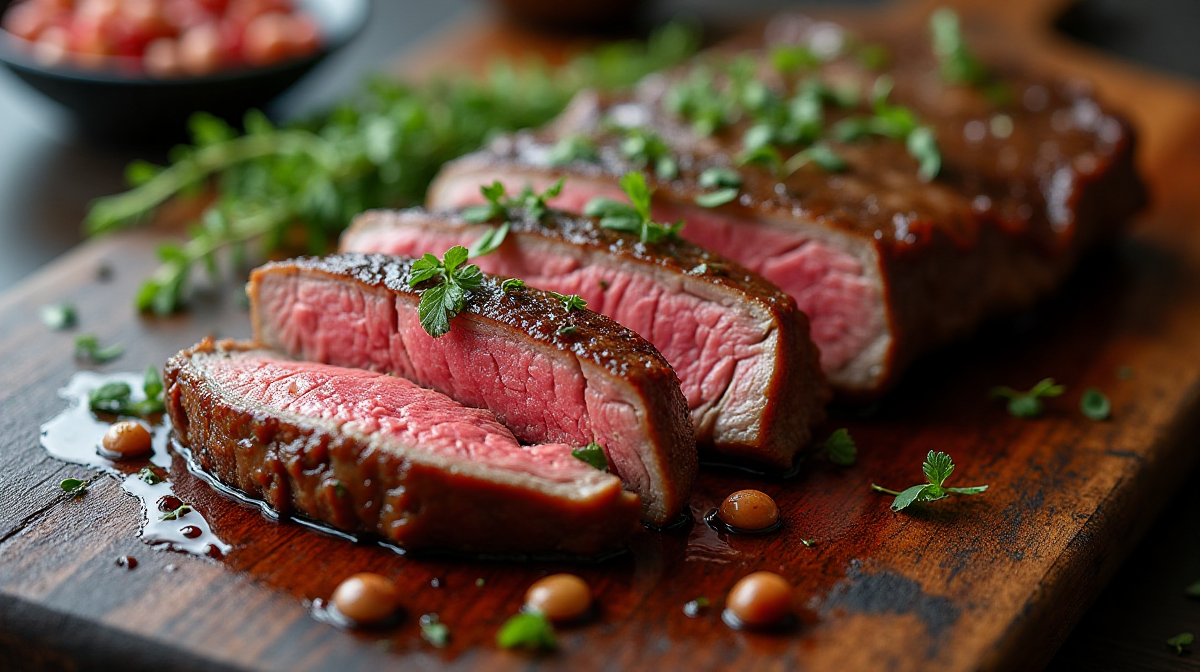Best Steak Steaks: A Meat Lover's Guide
Why Steak Matters: A Brief History & AppreciationFor centuries, steak has been a symbol of celebration, a cornerstone of countless meals, and a true testament to culinary skill. From ancient grilling practices to modern steakhouse sophistication, the appreciation for a perfectly cooked piece of stake has endured. It's a food that connects us to tradition, providing a primal satisfaction that few other dishes can match.
Understanding Steak Quality: Grades, Marbling & CutsThe quality of a steak is determined by several factors, but marbling – the intramuscular fat – is arguably the most important. Grading systems, like those used by the USDA, assess marbling alongside maturity and texture. Prime grade boasts the highest level of marbling, followed by Choice and Select. Beyond grade, understanding different cuts – each with its unique characteristics – is crucial for making an informed decision.
The Scope of This Guide: What We'll CoverThis guide will delve into the world of steak, exploring the best cuts, cooking methods, pairings, and where to source your perfect piece. Whether you’re a seasoned grill master or a novice cook, we'll provide the knowledge you need to consistently cook restaurant-quality steak at home. And for those looking for some excitement outside the kitchen, exploring platforms like stake sports betting can add another layer of thrill to your weekend.
The Best Steak Cuts – Detailed Breakdown
Tenderloin (Filet Mignon) - The Classic ChoiceFlavor Profile & Texture: Known for its incredibly tender texture and mild flavor, filet mignon is a favorite among steak purists. Its lack of significant marbling contributes to its tenderness but means it relies on cooking technique for flavor.Best Cooking Methods: Pan-searing and wrapping in bacon are excellent choices.Price Range & Availability: Typically the most expensive cut, readily available at most butcher shops and supermarkets.
Ribeye (Scotch Fillet) - Marbling & Flavor KingFlavor Profile & Texture: Rich, buttery flavor and exceptional marbling make ribeye a standout. It's juicy and incredibly satisfying.Bone-in vs. Boneless Ribeye: Bone-in ribeyes (cowboy steak) often have more flavor due to the bone’s contribution during cooking.Dry-Aged vs. Wet-Aged Ribeye: Dry-aging concentrates flavor and tenderizes the meat, while wet-aging enhances tenderness.Culinary Applications & Pairings: Perfect for grilling, pan-searing, or even roasting. Pairs well with bold red wines.
New York Strip (Sirloin Strip) – The Balanced OptionLeaner than Ribeye, Still Flavorful: Offers a good balance between tenderness and flavor with a slightly firmer texture than ribeye.Ideal for Grilling & Pan-Searing: Its shape lends itself well to both methods.Distinguishing Qualities & Sourcing: Look for a strip with a good amount of marbling and a bright red color.
Porterhouse & T-Bone – Two Steaks in OneUnderstanding the Difference: Both contain a piece of tenderloin and a strip steak, separated by a T-shaped bone. The porterhouse has a larger portion of tenderloin. Cooking Challenges & Tips: Requires careful cooking to ensure both steaks are cooked to perfection.Serving Suggestions & Portions: Best served with classic steakhouse sides.
Flank Steak – Affordable & Flavorful (with a caveat)Marinade is Key!: Flank steak is lean and benefits greatly from a marinade to tenderize and add flavor.Correct Cutting for Tenderness: Slice against the grain to maximize tenderness.Best for Quick, High-Heat Cooking: Grilling or pan-searing over high heat is ideal.
Skirt Steak – Similar to Flank, but a Different BeastBest for Fajitas & Stir-Fries: Its intense flavor and thinness make it perfect for these applications.Importance of Grain & Cutting: Like flank steak, slicing against the grain is crucial.Common Mistakes to Avoid: Overcooking; it's best served medium-rare.
Hanger Steak – The Butcher’s (Secret) CutFlavor & Tenderness Profile: Highly flavorful and tender, often referred to as the butcher's steak because they would often keep it for themselves.Where to Find It: Becoming more widely available, but still may require a visit to a specialty butcher.Optimal Cooking Techniques: Pan-searing or grilling to medium-rare.

Cooking Methods: Achieving Steak Perfection
Grilling – The Summer ClassicGrill Types: Gas, Charcoal, Pellet: Each offers different levels of control and flavor. Charcoal provides the most authentic smoky flavor.Temperature Control & Sear Technique: High heat is essential for a good sear.Best Cuts for Grilling: Ribeye, New York Strip, and flank steak all excel on the grill.
Pan-Searing – Indoor ExcellenceChoosing the Right Pan (Cast Iron is King): Cast iron retains heat exceptionally well, resulting in a superior sear.Achieving a Perfect Crust: Pat the steak dry and use high heat with a small amount of oil.Butter Basting & Aroma Enhancement: Adding butter, garlic, and herbs during the final stages of cooking creates a rich, flavorful sauce.
Reverse Searing – The Precision MethodLow & Slow Cooking for Evenness: Cooking the steak at a low temperature until nearly done ensures even cooking.Finishing with a High-Heat Sear: A quick sear at the end develops a beautiful crust.Benefits & When to Use: Ideal for thicker cuts, resulting in edge-to-edge pinkness.
Broiling – A Quick AlternativeBroiler Safety & Technique: Keep a close eye on the steak to prevent burning.Precise Timing & Monitoring: Broiling requires careful timing.Best Cuts for Broiling: Tenderloin and New York Strip.
Beyond the Steak: Sides & Pairings
Classic Steakhouse SidesCreamed Spinach: A rich and decadent accompaniment.Mashed Potatoes (Numerous Variations): From classic butter and cream to garlic or truffle-infused.Asparagus & Other Grilled Vegetables: A lighter option to balance the richness of the steak.
Wine Pairing GuideRed Wine Recommendations (Cabernet Sauvignon, Merlot, etc.): Cabernet Sauvignon pairs well with bold cuts like ribeye.White Wine Options for Lighter Cuts: Pinot Noir can complement tenderloin.Beer Pairings (Stouts, IPAs): A robust stout can stand up to a flavorful steak.
Sauces & CondimentsBéarnaise Sauce: A classic French sauce with tarragon and shallots.Peppercorn Sauce: Adds a spicy kick.Chimichurri: A vibrant Argentinian sauce with parsley, garlic, and olive oil.
Where to Buy the Best Steak
Butcher Shops – The Traditional RouteBuilding a Relationship with Your Butcher: A good butcher can provide valuable advice and custom cuts.Benefits of Custom Cuts & Advice: Tailoring the steak to your preferences.
Grocery Stores – Convenience & AccessibilityIdentifying Quality Cuts at the Supermarket: Look for bright red color and good marbling. Understanding Packaging & Labels: Pay attention to grading and sell-by dates.
Online Meat Delivery Services – The Modern OptionComparing Popular Services: Several companies offer high-quality steak delivered to your door.Shipping & Quality Considerations: Ensure proper packaging and temperature control.

Conclusion
Mastering Steak: A Journey, Not a DestinationCooking the perfect steak is a skill that improves with practice. Don’t be afraid to experiment with different cuts, cooking methods, and pairings. Perhaps while enjoying your meal, you can check the live premier league table for the latest scores. A good steak is often enjoyed alongside sporting events, and a little stake on the outcome can add to the excitement! Even the league of ireland premier division can be a fun watch with a great steak.
Resources for Further Learning (Books, Websites, etc.)There are countless resources available online and in print to help you refine your steak-cooking skills. Exploring these will further enhance your culinary journey and maybe even inspire you to try your hand at a different kind of stake altogether. Don't forget the importance of a quality stake meat selection for the best results.

